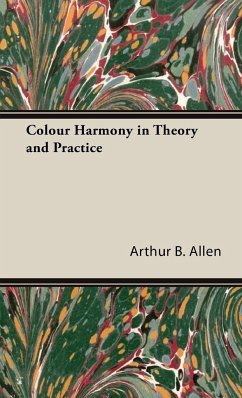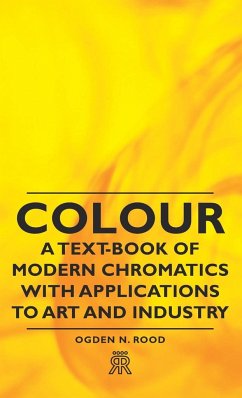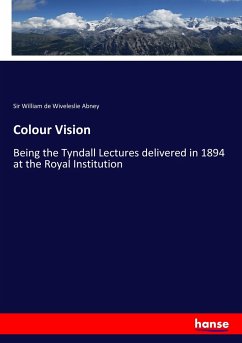Originally published in 1937. COLOUR HARMONY ITS THEORY AND PRACTICE by ARTHUR B. ALLEN. FOREWORD: Colour Harmony: Its Theory and Practice is closely linked to Colour Harmony for Beginners and I think the reason is clear. Whereas Colour Harmony for Beginners is a little volume so written that the newcomer to this science of colour can begin right away with pencil and colour box, working out the beauties that are to be found in the field of colour harmony, the present volume gives all this practical assist ance and, in addition, it gives the essential background knowledge without which the teacher and the student may find themselves at a loss. It is one thing to know the mere mechanics of doing. It is another thing to know the raison f& tre for so doing. Colour Harmony: Its Theory and Practice has been designed to cover clearly and concisely both spheres. I have been guided in my choice of subjects included in this volume by the numerous questions asked of me in my lectures during the past two years. I have been guided also by the topics discussed in letters sent to me by members of my audiences after my lectures were concluded and my listeners had had time to reflect upon my words. By taking my public work as my guide in the selection of points of interest in this volume, I feel that not only am I on sure ground but that also I shall be able to touch upon points of majority interest. It is more than possible that the reader will find his or her own particular problem ignored. This is almost inevitable since as I have em phasised in my work, colour is essentially an individual study. Should this be so then most cordially I invite correspondence for in the frank exchange of ideas, opinions and experiences lies the laying of sound foundation for creative work. Readers will be able to find me c/ o the publishers. ARTHUR B. ALLEN. London, 1937. CONTENTS CHAPTER PAGE FOREWORD .... 5 I. COLOUR VOCABULARY . . 9 II. COLOUR STORIES . . . . II HI. WHAT IS COLOUR? . . . 15 IV. HOW TO BUILD A COLOUR CIRCLE 2J V. COLOUR APPARATUS ... 36 VI. COLOUR HARMONY - - - 53 VII. THE HARMONY OF OPPOSITES . 62 VIII. ANALOGOUS HARMONIES . . Jl DC. MONOCHROMATIC OR DOMINANT HARMONY . . .8l X. THE NEUTRALS .... 88 XI. COLOUR MIXING .... 94 XII. ORIGINAL EXERCISES FOR FREE EXPRESSION . . .106 XIII. HOME DECORATION . . . I IO XTV, COLOUR AND WEAVING . . 115 XV. COLOUR TESTS . . . . ISO XVI. BIOGRAPHICAL NOTE I DR. WILHELM OSTWALD . . . .127 COLOUR HARMONY ITS THEORY AMD PRACTICE. CHAPTER I. COLOUR VOCABULARY. THERE is a language of colour as there is a specific language for every other specified activity. And as usual with a special vocabulary some confusion results in exact meanings. In this chapter I aim to set forth the main colour words and to state a definition that may be generally accepted. I aim at a majority acceptance, for it will not be possible for a long time yet to standardise terms absolutely. One can get near to this desired standardisation toward which I aim. Teachers will be doing signal service if they insist upon exactitude in definitions as they insist upon exactitude in grammatic and in scientific definitions. It makes the foundation of colour science so much more accessible to the man in the street. And contrary to some opinions it does not result in a cramping of the creative impulses. On the contrary it releases them more profusely for it removes the mind-fogging con fusion right at the onset. The beginning of our colour work is with the hues. The term hue indicates the chromatic value of a colour. Colour in the past has been misused. The term should include the black, grey and white. For colours not including these three neutrals the term chroma is more accurate.








